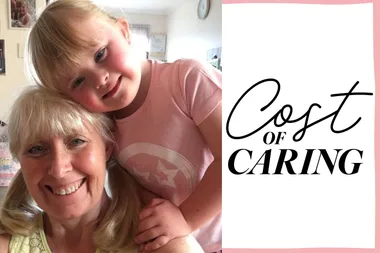Heart disease kills more women than any other disease and it is estimated that around one-third of us have already developed some form of it, most often high blood pressure or elevated cholesterol. The good news? There are so many things you can do to reduce your risk.
Start with the basics: You can probably recite them, but they bear repeating: stop smoking, eat a diet low in saturated and trans fats, don’t overdo alcohol, and exercise.
Watch the salt: One review showed that reducing salt to around five grams a day had a significant effect on high blood pressure Avoid processed or packaged foods, as these tend to have a high salt content.
Related: What to eat to beat cancer
Mind your minerals: While sodium raises blood pressure, potassium lowers it. Potassium-rich foods are apples, bananas, asparagus, cabbage, kelp, and alfalfa. Magnesium — found in seaweed, leafy greens, almonds, and lentils — may help to reduce heart palpitations.
Say NO: Nitric oxide (NO) relaxes blood vessels and improves blood flow to all tissues, including the heart. Your body makes NO, but production drops with age. Good food sources are celery, beetroot, spinach, leeks, parsley, fennel and cabbage.
Tame triglycerides: Natural anti-inflammatories help counter these harmful blood fats, as well as regulate heart rhythm, and reduce clotting and inflammation. Cold-water fish like salmon or sardines are a good source, or take a supplement — aim for 2,000mg of omega-3 fatty acids daily, taken as fish oil or flaxseed oil.
Keep it clean: Environmental toxins have a profound effect on heart health, with studies suggesting that long-term exposure to lead, cadmium, and polychlorinated bisphenols (BPA) all cause high blood pressure. Blood tests can confirm your status.
Say hi to hawthorn: Long regarded by Western herbalists as a ‘food for the heart’, this herb is an antioxidant that also tones the heart (cardiotonic) and dilates the blood vessels (vasodilator). Use under supervision by a qualified herbalist.
Go to herbs: Other heart-healthy herbs include gotu kola and garlic, which have both been investigated for their ability to lower raised cholesterol and triglycerides. One study also showed garlic can lower blood pressure by five to eight points. (Note: high doses can interfere with anti-thrombotic drugs; check with your doctor).
Look to the east: Chinese red-yeast rice is a supplement that contains lovastatin, a naturally occurring statin, but without the problematic side effects which may occur with conventional statin drugs. It also contains cholestin, which lowers raised cholesterol and triglycerides. A naturopath or traditional Chinese medicine practitioner can prescribe it.
Skip the caffeine: Caffeinated drinks — including carbonated soft drinks, as well as tea and coffee — have been shown to increase blood pressure.
Stress less: When you get stressed, a cascade of hormones are released which undermine heart health — adrenaline, which elevates blood pressure, cortisol, which leads to belly fat, and aldosterone, which causes fluid retention. Make a point of taking time every day to relax. This doesn’t mean slumping in front of TV, but using tried and tested formal relaxation techniques, like yoga, meditation, or visualisation.
Just breathe: Research shows that yogic breathing — slowing the rate of breathing and extending the outbreath — is as effective in lowering blood pressure in people with mild hypertension as taking conventional medication.
Related: Five ways to fight flu
Whittle your waist: Weight gain around your middle is strongly linked to metabolic syndrome, a condition characterised by elevated blood pressure, reduced insulin sensitivity, lower HDL (‘good’) cholesterol, and higher triglycerides.
Be happy and know it: The links between anger, hostility, depression and anxiety and cardiovascular health are well documented; a positive attitude, on the other hand, has tangible heart benefits. Consciously choose to turn that frown upside down.
Video: Soft drinks linked to heart disease
Newsletter conversion description. Get the latest in your inbox.
























.png?resize=380%2C285)
.jpg?resize=380%2C285)




.png?resize=380%2C285)













































